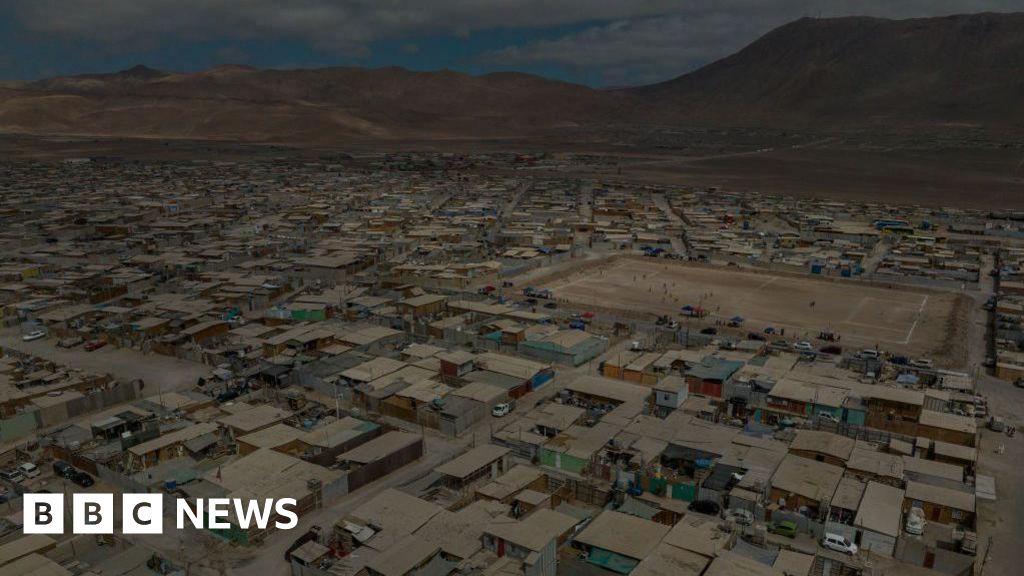Science correspondent, BBC News
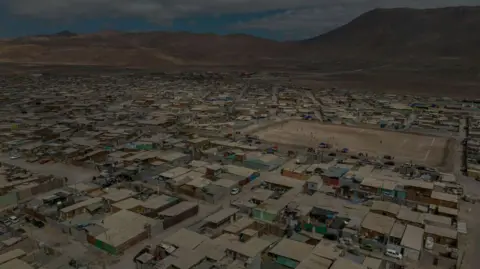 Getty Images
Getty ImagesCapturing water from fog – on a large scale – could provide some of the driest cities in the world with drinking water.
This what researchers in Chile have concluded after studying the potential of fog harvesting in the desert city of Alto Hospicio in the north of the country.
Average rainfall in the region is less than 0.19in (5mm) per year.
“The city also has a lot of social problems,” said lead researcher Dr Virginia Carter Gamberini, from Universidad Mayor. “Poverty, drugs, many slums.”
With no access to water supply networks, people in the slums rely on drinking water that is delivered by truck.
However, clouds of fog that regularly gather over the mountain city are an untapped source, researchers say.
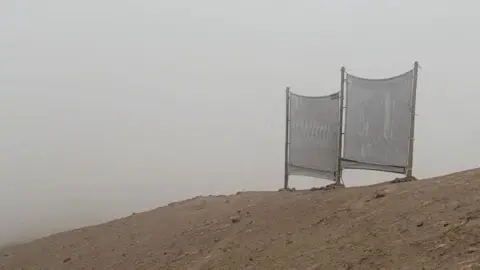 Maria Virginia Carter Gamberini
Maria Virginia Carter GamberiniHow do you harvest fog?
Capturing fog water is remarkably simple – a mesh is hung between poles, and when the moisture-laden clouds pass through that fine mesh, droplets form. The water is then channelled into pipes and storage tanks.
It has been used at a small scale for several decades, mainly in rural South and Central America – in places with the right foggy conditions. One of the biggest fog water harvesting systems is in Morocco, on the edge of the Sahara Desert.
However, Dr Carter says a “new era” of much larger-scale fog harvesting could provide a more secure and sustainable supply of water in urban environments where it is most needed.
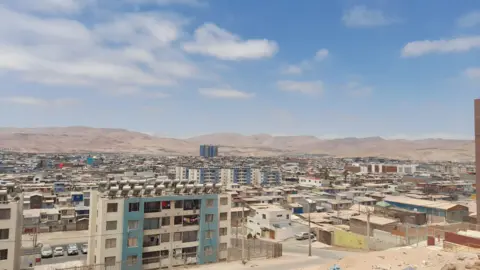 Maria Virginia Carter Gamberini
Maria Virginia Carter GamberiniShe and her colleagues carried out assessments of how much water can be produced by fog harvesting, and combined that information with studies of cloud formation in satellite images and with weather forecasts.
From this, they concluded that the clouds that regularly form over the Pacific – and are blown across the coastal mountain city – could provide the people of Alto Hospicio’s slums with a sustainable source of drinking water. They published their findings in a paper in the journal Frontiers of Environmental Science.
Alto Hospicio’s fog forms over the Pacific Ocean – when warm, moist air flows over cold water – and is then blown over the mountains. The reliably foggy conditions here allowed Dr Carter and her colleagues to pinpoint areas where the largest volumes of water could be harvested regularly from the clouds.
Based on an annual average water collection rate of 2.5 litres per square metre of mesh per day, the researchers worked out:
- 17,000 sq m of mesh could produce enough water to meet the weekly water demand of 300,000 litres that is currently delivered by truck to urban slums
- 110 sq m could meet the annual demand for the irrigation of the city’s green spaces
- Fog water could be used for soil-free (hydroponic) agriculture, with yields of 33 to 44lb (15 to 20kg) of green vegetables in a month
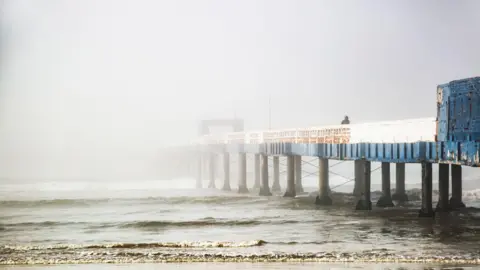 Getty Images
Getty ImagesAlto Hospicio is on the edge of the Atacama Desert – one of the driest places on Earth. With little to no precipitation, the main water source of cities in the region are underground aquifers – rock layers that contain water-filled spaces – that were last refilled thousands of years ago.
With urban populations growing, and demand on those water supplies from mining and industry, the scientists say there is an urgent need for other sustainable sources of clean water.
Dr Gamberini explained that Chile is “very special” for its sea fog, “because we have the ocean along the whole country and we have the mountains”.
Her team is currently working on a “fog harvesting map” of the whole country.
“Water from the clouds”, as Dr Carter describes it, could, she said, “enhance our cities’ resilience to climate change, while improving access to clean water”.

